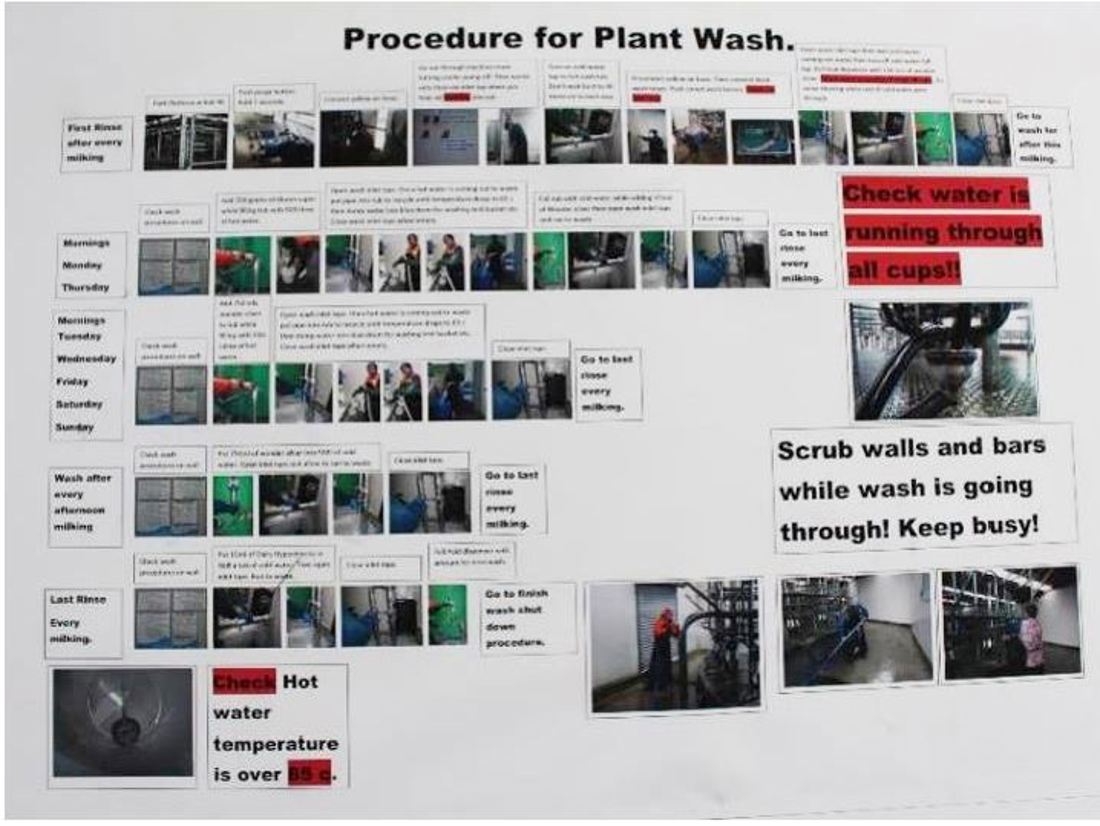Standard Operating Procedures (SOP)
3 min read
A Standard Operating Procedure (SOP) is a series of steps to be followed to accomplish an end result. On our farms we often have team members with different experiences, capability and languages, which can make it challenging to ensure that everyone in the team knows and understands the expectations.
One of the communication tools available to help all team members know what to do is visual Standard Operating Procedures (SOPs). It’s good to have instructions written down or communicated visually so we’re not just relying on verbal instructions. Keep SOPs simple, easy to understand, and regularly review and update them.
Complex tasks on-farm, if completed incorrectly, could present a significant risk to your business. An SOP is a great way to minimise this risk. To ensure that the whole team is committed to following the SOP it is important to get them involved in creating it. This allows for:
We all became far more organised, expectations were really visual and obvious.
Farmer quote
What you will need:

Things you'll need for creating a standard operating procedure.

Things you'll need for creating a standard operating procedure.
Examples of this might be:
Pre-populate some of the post-it notes or cards with some of the steps in the process. Don’t worry about getting them all at this stage.
Get the team to brainstorm and map out all individual steps involved to complete the task. They will need to add all the steps you have missed, and then put all the steps in the right order.
You will likely find that each team member is doing things in a slightly different way. It’s important to acknowledge there is no one ‘right’ way, especially if there wasn’t a SOP in place previously.
Process mapping allows everyone to agree on one way that is most efficient and works for the whole team. 
Delegate responsibility for turning the rough process map into a visual SOP to someone in the team who has high attention to detail and would enjoy the responsibility.
Use photos and easy-to-understand markers wherever possible. Include health and safety alerts where appropriate. An example of markers is numbering switches and handles using ear tags and cable ties.
Test the SOP, it can be useful to test this on newer team members to ensure it makes sense and contains everything a new person would need to know.
Ensure the SOP is reviewed regularly, and all employees are trained in the SOP.
Adjust these with your team to ensure they work for your farm.

Example of a plant wash Standard Operating Procedure (SOP).

Example of a vat wash standard operating procedure (SOP).

Example of milk silo wash Standard Operating Procedures (SOPs).

Example of a calf feeder cleaning Standard Operating Procedure (SOP).
Now’s the perfect time to check in, plan, and set up for a strong season. We’ve pulled together smart tips and tools to help you stay ahead all winter long.
Whether you prefer to read, listen, or download handy guides, we’ve got you covered with trusted tools to support your journey every step of the way.
Put our proven strategies and seasonal tools to work. Boost production, support animal health and watch your profits hum.
Tools that are backed by science, shaped by farmers and made for this season.
That’s Summer Smarts.